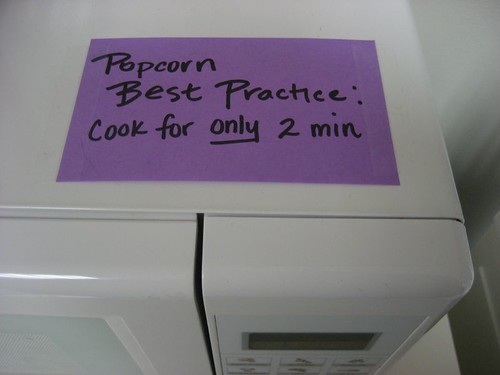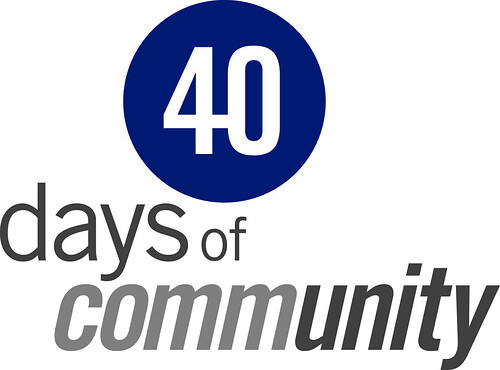Open Solutions Alliance: Sartorio unveils OSA’s strategy
The Open Solutions Alliance (OSA) debuted recently with a strong emphasis on promoting interoperability among open source software solutions, and its membership was supposed to be open to organizations providing open source solutions. Dominic Sartorio – OSA’s President – few days ago stepped by and eventually get engaged in a interesting discussion with me about Open Solutions Alliance’s strategy.
 Oblique Strategy by gualtiero
Oblique Strategy by gualtiero
At the OSA (Open Solutions Alliance), we have a diverse membership and are often asked what we consider to be “open†business models. So, we track this issue with great interest.
Inevitably, discussion goes down the path of licensing, or how strong each member’s community it. What isn’t discussed enough, IMO, is what best meets customer needs.[..] Because open source, especially in the applications space, is still relatively new, we think there is much room for experimentation regarding what business models are best for the most customers. Consequently, we don’t limit our membership based on some preconceived notion of business models we think ought to be the best.[..]
I have been pretty critical about OSA’s decision to accept members not using open source licenses, calling them “false positive” , but reading Dominic’s comment I learned that there is one notion that they don’t compromise, namely the degree of openness:
We fundamentally believe that open and collaborative behavior is consistently superior to closed and unilateral behavior. This difference go beyond how the source code is managed, to how the company fundamentally operates; How it engages with its customers and partners, its corporate marketing, and even corporate culture and internal politics.
I replied suggesting to be clear about it, and tell everyone that OSA has decided not to talk about open source, while now the logo itself reports “open source at workâ€. I invited OSA to avoid to make open source definition uncertain, considering make some adjustments to the website, reporting:
From time to time, the OSA may use the term “open source solutions†or “open source based solutions.†We do not mean to confuse this with the OSI’s Open Source Definition, which includes requirements not included in our open solution definition.
Dominic come over again, below his full comment.
Hi Roberto, Thanks for your thoughtful reply. Yes, we had our own “false start†through sloppy use of the term “open source†when we originally launched last winter. Open Source (capital ‘O’, capital ‘S’) means something very specific, as defined by the OSI, and the OSA intends to cover broader ground, for the reasons I described in my previous post. Our collective experience has been that customer value can be achieved in a variety of ways, and some of them don’t always fit a strict definition.
You found other parts of our website that we overlooked. Thanks for finding this, and we will fix this. We don’t intend to cause further ambiguity around what it means to be “open sourceâ€, but rather clarify an issue that we believe hasn’t received enough attention: focus on customer needs. In an effort to avoid confusion, we came up with our own term, “Open Solution Definition†(PDF).
Rest assured that our continuing work on this issue will be done in fully open and collaborative ways. Just like open and collaborative development has led to great Open Source products, we believe that open collaboration by the vendor community on various business issues is the best way to achieve customer success.
Many vendors are incapable of this behavior. Some grew during the pre-WWW time when business success depended on unilateral behavior and “knowledge hoarding†than the collaborative behaviors that modern technologies now enable. Take a look at a more recent blog re: the Microsoft patent issue as an example.
Searching for “Open Source” occurrences I noticed that among the actual members only two out of 19 don’t mention open source in their presentations. Apparently OSA is building a stack of open source products – where I see Red Hat RHX more credible offering open source stacks – and a stack of open source services. The latter hypothesis sounds more interesting, OSA would be the first to exploit the potentialities of open source firms taking advantage of the absence of a Corporate actor.

 Beekeepers (private) parking by
Beekeepers (private) parking by  Choose by
Choose by  Absentmindedly juggling by
Absentmindedly juggling by  Best Practices by
Best Practices by 

 Unconference by
Unconference by
Dominic Sartorio 1:00 am on June 1, 2007 Permalink
Hi Roberto,
Interesting ideas. We have a lot of product vendors among members, but mostly products whose success depends on horizontal services being relatively standard in the industry (integration, management and monitoring, project management, reporting, content management, and broadly-scoped business applications such as ERP, all depend on best practices for various services). We are also starting to attract more “integrator†members, who don’t represent an open source product themselves but focus on support and professional services. So, your observation appears to be proving itself out in practice, and I would expect the OSA to focus on these areas in the future.
Roberto Galoppini 3:36 pm on June 2, 2007 Permalink
Dominic, I guess that OS firms with “vertical” offering won’t apply if among OSA’s members someone else has already a similar offer. So, at some point you might consider that one database is not enough, but could you bring in any other?
I can hardly see other OS database firms investing in a common brand-oriented strategy, because appropriating returns sounds uncertain. Dominic, go for focusing, go!